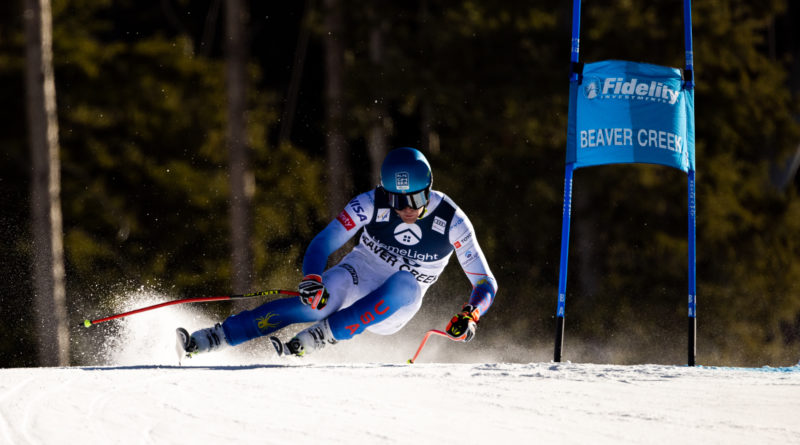10 Athletes of the Year – 2022
It’s never easy to pick just 10 Athletes of the Year from Vermont. And in a year that straddled two Olympic selection processes– first for the Tokyo Games in July 2021 and then for this winter’s Games in Beijing, it was even harder. Vermont has never had a stronger contingent heading to the summer Games and in the Winter Olympics, Vermonters are dominating in teams such as biathlon where six of the eight Olympic team make Vermont their training ground.
But Vermont Sports is about more than just the typical sports that make up the Olympic. And our athletes often excel in ways that don’t involve winning or losing or head-to-head competition.
To narrow this list, we had to tighten our criteria this year. We looked for athletes who had made a significant accomplishment in their sport in 2021 and who still have strong ties to Vermont – they either live here, or their immediate families do. Some, like ski racer Paula Moltzan would have made the cut but she’s on hiatus from the University of Vermont and living in Massachusetts.
We recognize that all athletes travel to compete and train, but we wanted to recognize those who keep coming back, who still have family here and who keep making Vermont proud. Here they are, in alphabetical order.
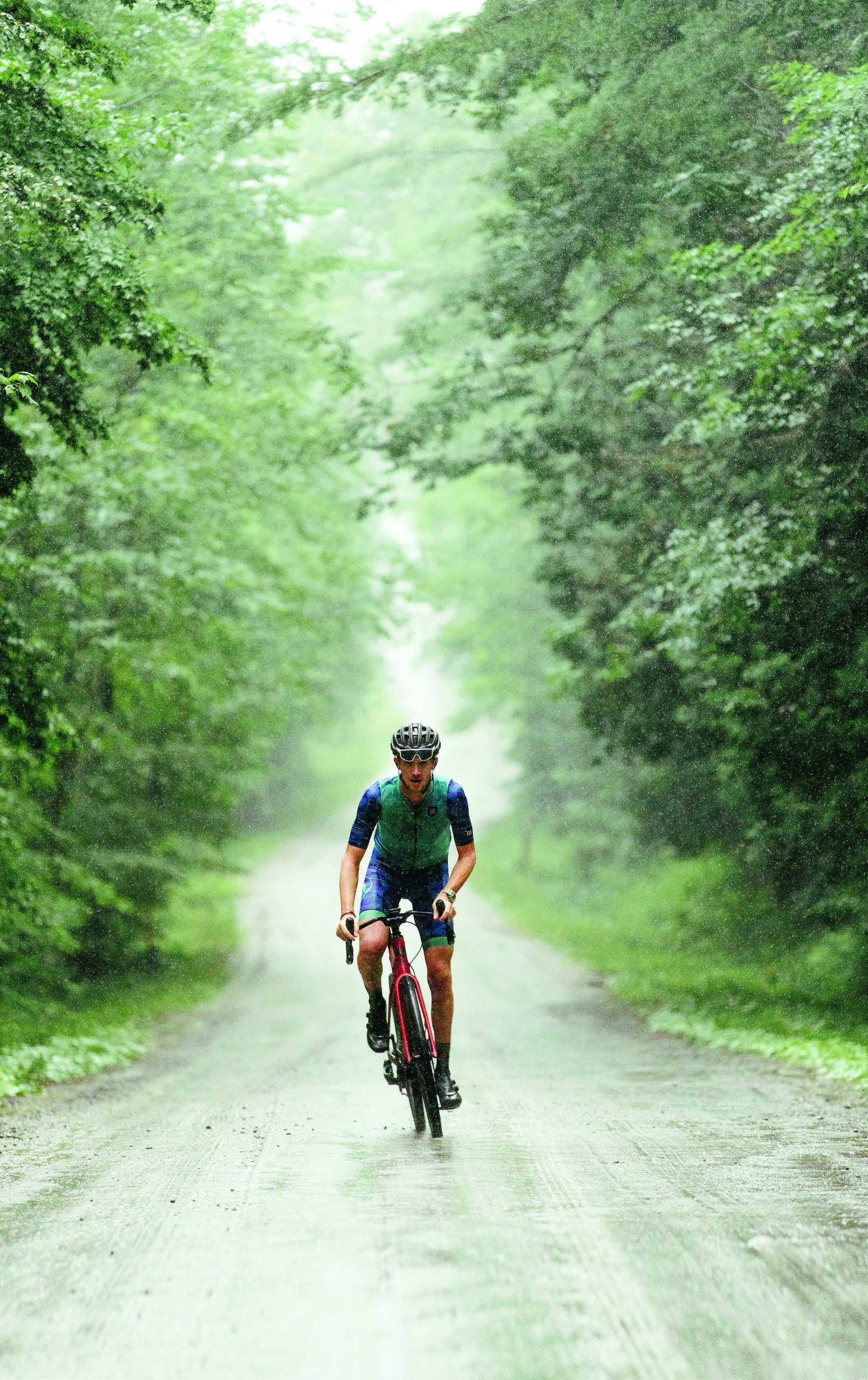 Ian Boswell, Peacham
Ian Boswell, Peacham
Ian Boswell didn’t bring home any Olympic medals. He didn’t stand on any World Cup podiums. In fact, the former Tour de France pro seemed almost like a reluctant competitor when he came out of retirement, so to speak, and entered gravel racing’s equivalent of the Daytona 500, the 200-mile race across Kansas, renamed Unbound Gravel. He came home with the winner’s trophy: a big fat belt buckle.
Boswell had been living a charmed life with his wife Gretchen in Peacham, working for Wahoo Fitness as an athlete liaison, putting on the Peacham Fall Fondo, gardening and riding Vermont’s backroads for fun.
He wasn’t a sponsored athlete anymore and new to the pro gravel scene — Unbound was only his second gravel race. In short, he wasn’t expected to be a contender. But somehow, he couldn’t help it. “I was going to all these races for my job, anyway, so I figured I might as well race,” he told Vermont Sports in June. He surprised even himself by upsetting reigning champion Colin Strickland and outsprinting an elite pack of former WorldTour riders that included Peter Stetina, Laurens ten Dam and Vermont’s Ted King.
That win could have been a fluke. It wasn’t. In August, Boswell went on to win the first running of the 100-mile gravel sufferfest, the Belgian Waffle Ride, in Asheville, N.C., which featured 9,600 feet of climbing. And he also won the Vermont Overland against a roster of top local talent.
But perhaps the race he was most excited about was the Migration Gravel Race in Kenya, a four-day, 650K gravel ride through the Maasai Mara to help support Kenyan riders. “They really wanted us to ride our hardest so their athletes could gain experience and see what it’s like to race internationally. It was one of the most unique and influential races I’ve done. It was point-to-point every day and at night we’d set up camp with these different Maasai tribes. The terrain was a mix of Paris-Roubaix and mountain biking,” he said.
At the end of 2021, the question on everyone’s mind was what Boswell would do next. Dangling before him was the new LifeTime Grand Prix series of six gravel events with a $250,000 prize purse. In December, Boswell announced he wouldn’t be competing. With a newborn daughter Maija at home and his job at Wahoo going full steam, he opted for his quieter life in Peacham.
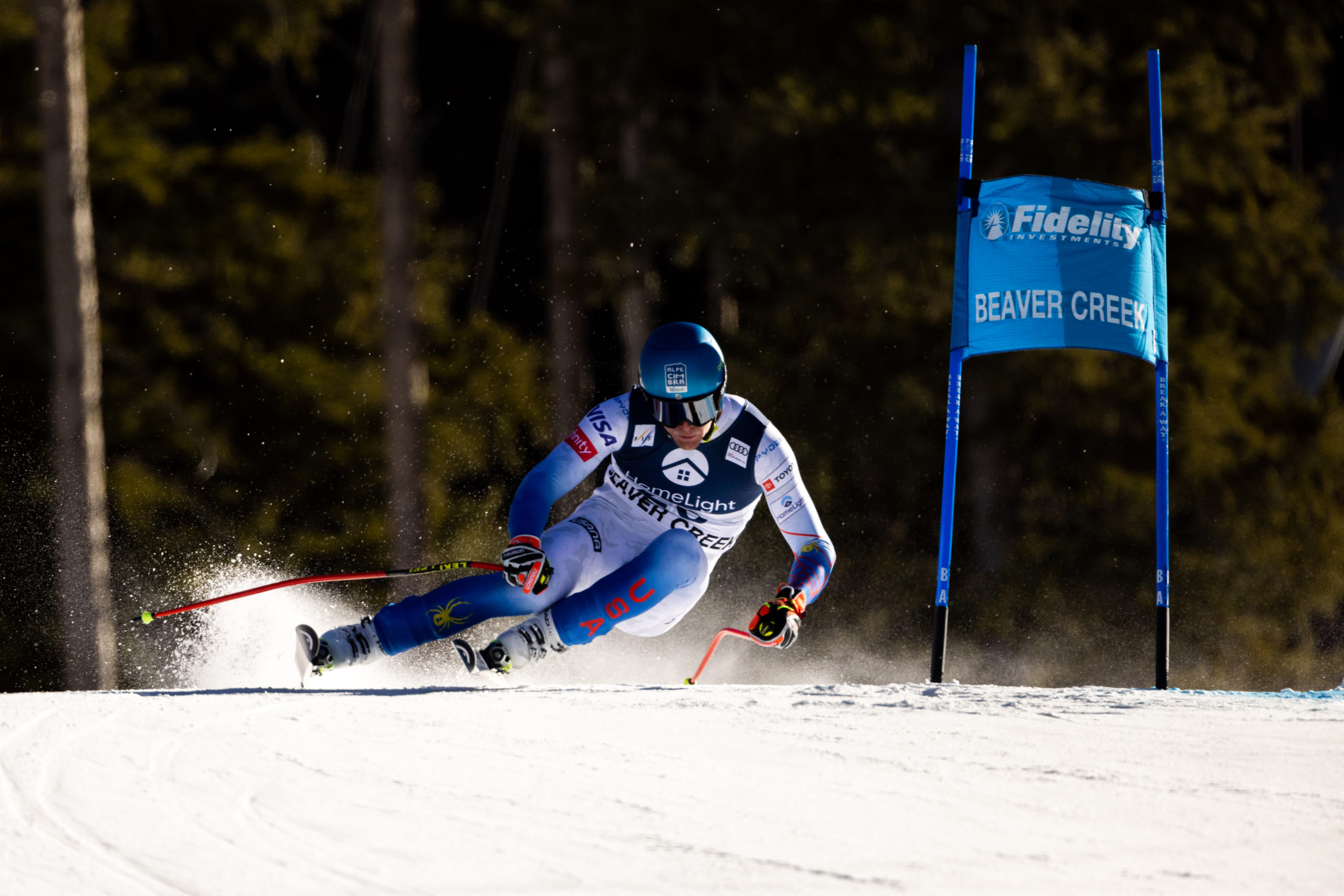
Ryan Cochran-Siegle, Burlington
In December, Andrew Dampf of the Associated Press called Ryan Cochran-Siegle “The brightest prospect for an Olympic medal among the men on the U.S. Ski Team.” For anyone who knows the Vermonter, that would evoke a big “duh!”For years, Cochran-Siegle has shown potential in short explosions, fireworks of glory, only to flame out with an injury.
This past year was no exception, but the explosions were his brightest yet. In the first part of 2021, Cochran-Siegle, 29, earned his first World Cup podium, a silver in the downhill in Val Gardena, Ital and 10 days later won the super-G in Bormio. A few weeks later, on the training run for the famed Hahnenkamm downhill in Kitzbuehl, Austria he placed first. But in the actual race, a bad crash saw him airlifted out with a season-ending fractured neck.
Last spring, RCS was still wearing a neck-brace as he helped his cousin Tim Kelley boil sap at for the family business UnTapped the sugarhouse at the base of Cochran’s Ski Area. “It’s the first time I’ve been here in the spring in a long time,” Cochran-Siegle. Reflecting on his past season he admitted, “So much of it is in my head. At this level, anyone can win it just depends on what kind of day you are having.”
But by December he was back, skiing now on Head skis—a risky change in a year leading up to an Olympics. The gear change didn’t slow him down. Cochran-Siegle earned a sixth in The XFinity Birds of Prey downhill in Beaver Creek, Colo. Then, in late December, Cochran-Siegle came just 0.05 seconds shy of another podium, placing fourth in the Bormio super-G.
This winter’s Games will be Cochran-Siegle’s second go around. His best finish in PyeongChang was 11th in the GS and 14th in the super-G. And he’ll have a family back home cheering for him that includes five other Olympic contenders including his mother, Barbaba Ann Cochran, the Olympic gold medalist and coach who helps run Cochran’s Ski Area in Richmond.
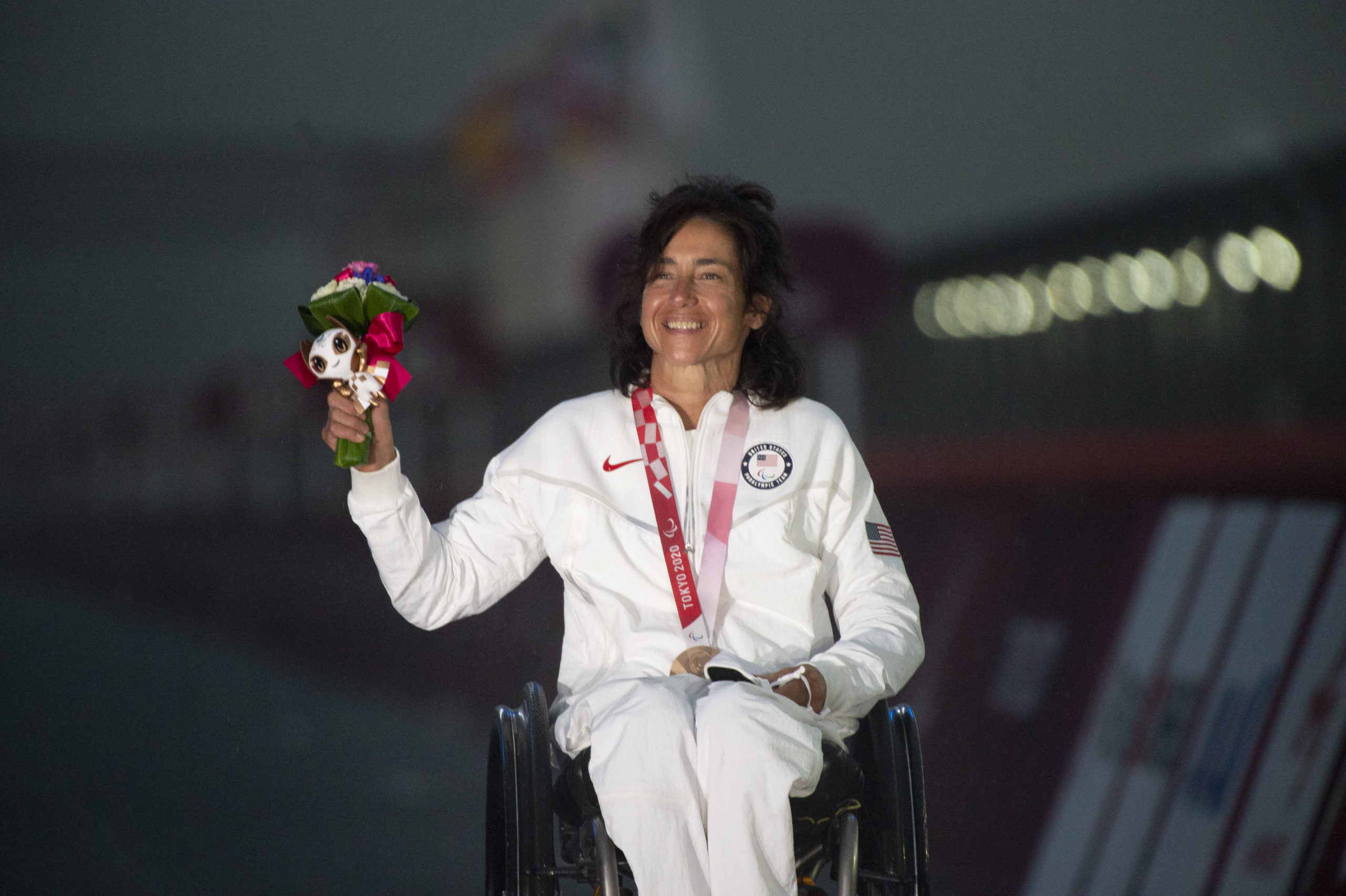 Alicia Dana, Putney
Alicia Dana, Putney
Going into this summer, Alicia Dana had one Olympic medal, a silver she earned in the Rio time trial. In Tokyo 2021, the handcyclist from Putney was on her way to her first gold when the unthinkable happened. “I was feeling really good. I was 40 seconds ahead in the time trial when I had a mechanical,” she said. The chain came off her handcycle and then fell apart as a volunteer tried to help her get it back on. She watched as the field kept going. “It was devastating because I knew I was having the race of my life,” she said. She ended up 16th.
But that didn’t stop Dana. In her next race, the H1-4 road race, she earned a bronze medal and then helped teammates Ryan Pinney and Freddie de Los Santos win a bronze in the mixed relay.
She did all this at age 54.
“I was in the best shape of my life this year,” says Dana, who has been paralyzed from the waist down since falling out of a tree at the Putney School when she was 17. Dana has been competing for nearly two decades and this was her third Olympics. “I thought about retiring but I also knew I could keep doing better,” she said.
“This summer, I got a silver in a World Cup in Belgium and I just felt then that I had more potential.” Last May, she switched coaches. While she had been training with someone who worked with handcyclists, her new coach, Jakub Novack, was a pro cyclist. “He really energized me. He never considered the factor of my age, he was just confident that I could keep improving.
And Dana did. “I’d watch my numbers. The functional power threshold (FTP) gives you a sense of how strong you are. That number just kept getting higher. I used to be around 140 and by summer I was getting up to 172.”
For Dana, those numbers matter more than races. “I don’t get to race a lot or train with others much,” she notes, though she is the team captain of the Challenged Athletes Foundation women’s handcycling team. “But for me, what matters most is how I feel like I’m doing, not just race results,” she says.
While this may or may not be Dana’s last Olympics, she’s going to keep up her training. “Working out and being fit helps me in so, so many ways – as a single mother, as a Vermonter who has to take care of a house through the winters here and as someone who lives life in a wheelchair and has to do everything with their upper body. It’s just so important.”
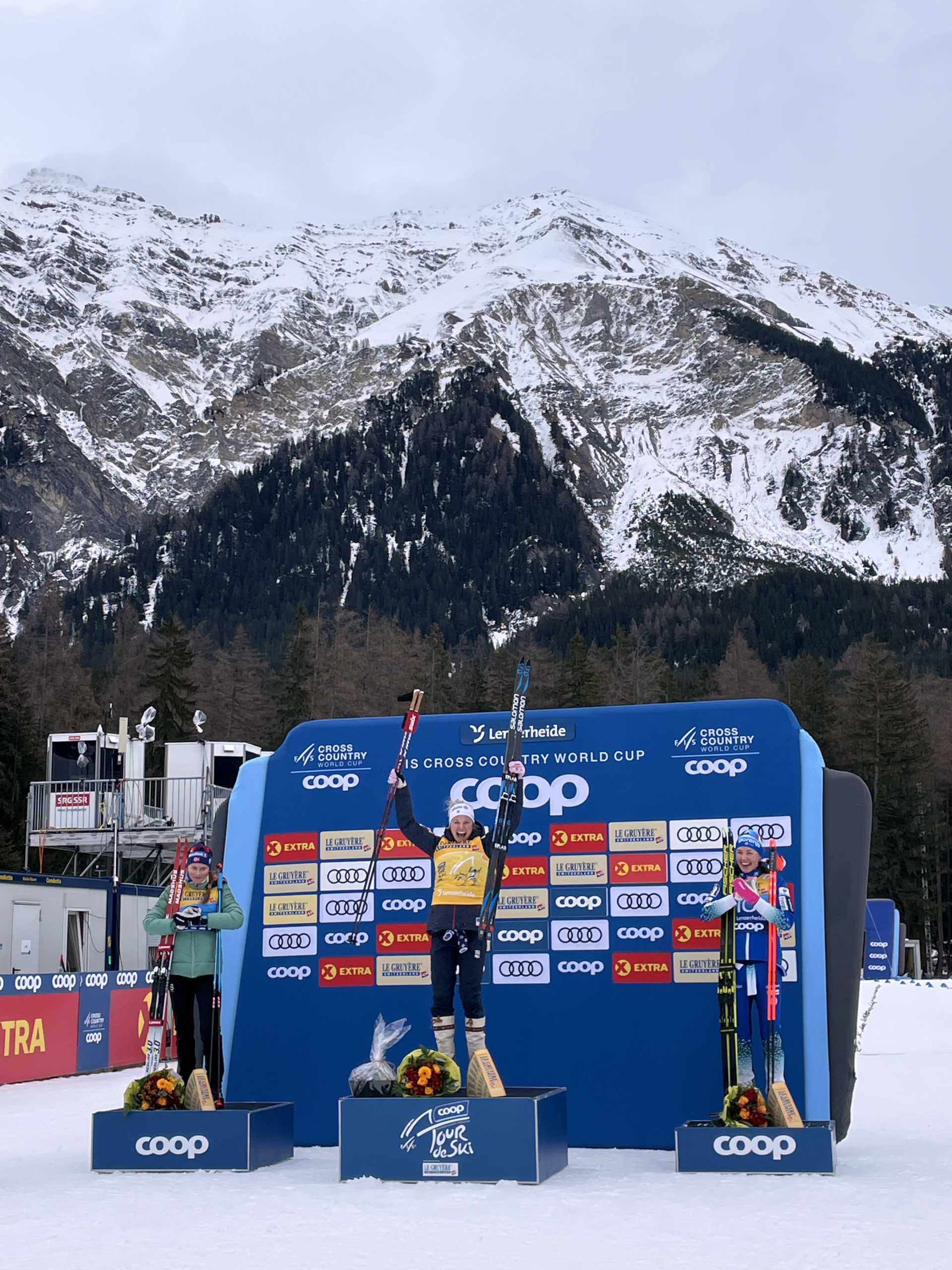 Jessie Diggins, Stratton
Jessie Diggins, Stratton
For much of the summer, you could see Jessie Diggins running up Stratton Mountain where she owns a condo, working out in the gym there or poling her way along a back road on roller skis with such determination you’d think there must be a finish line somewhere ahead.
That finish line, for Diggins, is always there in her mind, always driving her to push as hard as she can, to crawl into the pain cave and sit there until she comes roaring out in a glorious burst of speed and stamina.
In PyeongChang, Diggins and teammate Kikkan Randall became the first U.S. cross-country skiers to ever win an Olympic gold medal. In 2021, Diggins also became the first American to win the grueling series of races known as the Tour de Ski. To crown that achievement, she took the overall World Cup crystal globe for cross-country, a remarkable achievement and the first American to do so.
Going into this season, Diggins is looking just as strong, having already earned a half-dozen podium finishes by early January. She had two wins in the Tour de Ski before a fall during a collision moved her back in the rankings. She ended up in 8th, all while fighting off a cold. Still, she took home the individual sprint title for the Tour de Ski.
For Diggins, racing is all part of her training. “Basically, all of this racing is how I get in shape. So for me, it’s using the Tour de Ski as part of my preparation for the Olympics, but also – whether or not I’m working into the season, whether or not it’s part of the intentional prep phase – for me, every single race I hit it as hard as I can,” she said in a media call in December.
And few people hit is as hard, or go as deep, as Diggins.
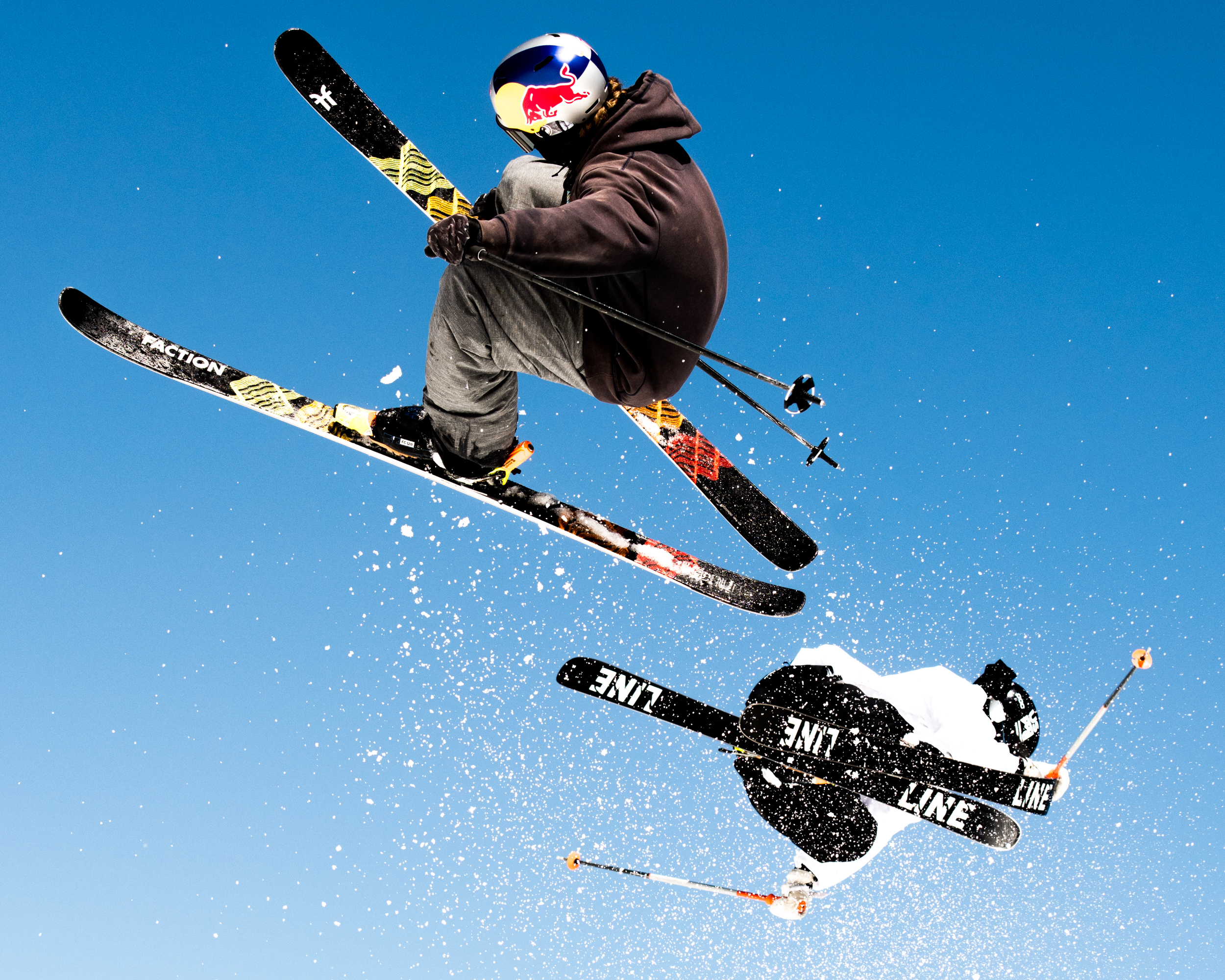 Mac Forehand, Stratton
Mac Forehand, Stratton
Perhaps the biggest challenge in 2021 for Mac Forehand (above left) was securing a spot on the 2022 Olympic Team for slopestyle and big air skiing. To do so, the 20-year-old would have to face off a superstar roster of American talent that included two-time Olympian Nick Goepper and Colby Stevenson, who was ranked second in the world. The U.S. men were only assured of four spots, even with most depth of talent of any team. However, by mid-December 2021, Forehand knew he and Stevenson had amassed the points needed to officially make the team.
We first wrote about Mac Forehand when he was just 13 and starting to win local events near his family’s ski home in southern Vermont. He enrolled at Stratton Mountain School and his family moved to the area. At 17, Forehand, then a Stratton Mountain School junior, made history by winning the overall World Cup for Big Air in 2019.
Forehand then had to sit out the Covid-shortened 2020 season, thanks a torn ACL. He spent that time recovering, skiing and making videos with his buddy Cody Laplante, another Red Bull athlete, and training in Park City.
In 2021 he was back and placed fourth in the World Championships for Big Air in Aspen and also fourth in the Dew Tour. Earlier this season, Forehand earned an 8th in big air at Chur, Switzerland. At the Mammoth, Ca World Cup in early January Forehand finished fourth in slopestyle, behind Americans Alex Hall and two-time Olympian Nick Goepper, and Canadian Evan McEachran. Come February, the Americans will be the ones to watch.
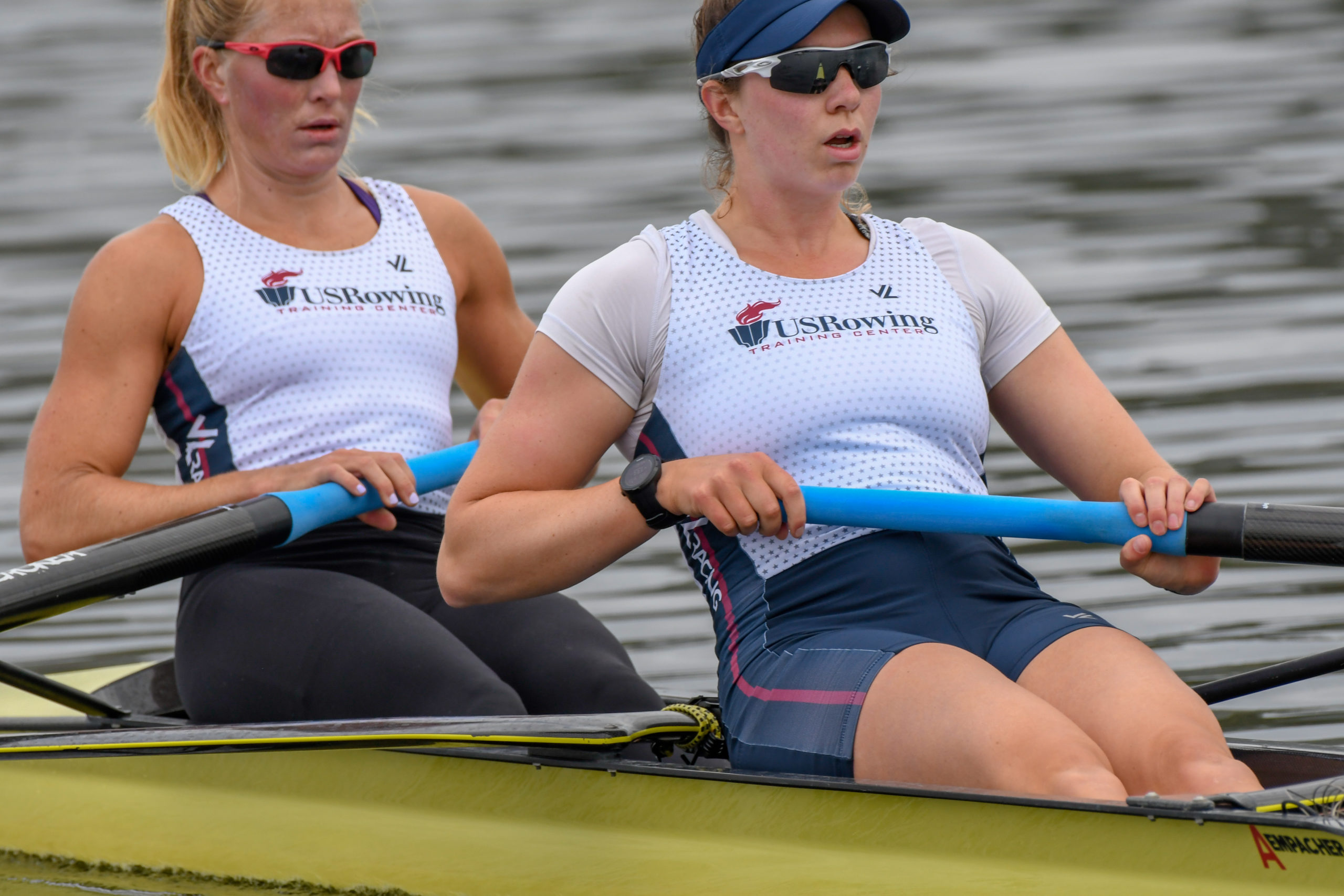 Brooke Mooney, Peru
Brooke Mooney, Peru
For once, Brooke Mooney wasn’t competing at the Head of the Charles in Boston last October. But the member of the U.S. Team’s Olympic eight was there signing autographs with a huge smile on her face.
For Mooney, 2021 was a year of ups and downs. A high point came early in the year. On March 25, Brooke sat down on a Concept2 RowErg and broke the world record for women pulling indoors over 2000 meters. “I knew what the record was and in the back of my mind, I knew what I needed to do for the first half,” she says. “The beauty of rowing on an erg is you can see the numbers and stay fixated and motivated by them.”
In 2017, at the University of Washington, Mooney had already impressed her coaches by breaking the school’s erg record with a 6:35 for the 2,000. Still, Mooney had to work hard to earn a spot on the Olympic team. The U.S. women’s eight boat had won gold medals in the three previous Olympics. But only two of the women would be returning to race in Tokyo.
The rest of the team was selected after a series of 25 or more seat races, a grueling series of head-to-head duals with rowers being switched in and out of boats. Mooney, who grew up in Peru, Vt., where her family still lives, started out as a cross-country ski racer podiumed four times at the Junior Nationals. But then a coach at Craftsbury Outdoor Center, Pepa Miloucheva, suggested that Mooney, who is 6 feet, 2 inches, might try her hand at sculling.
For her senior year, she rowed at Vermont Academy, where her father had previously been headmaster.For many, it wasn’t a surprise that Mooney was named to the U.S. Olympic Team’s women’s eight, where she rowed in the middle of the boat, the engine room. Going into the Tokyo event, Mooney had no idea how the team would fare, not having had the opportunity to race much due to Covid. The women’s eight finished a disappointing fourth but for Mooney, 25, the prize was making the team.
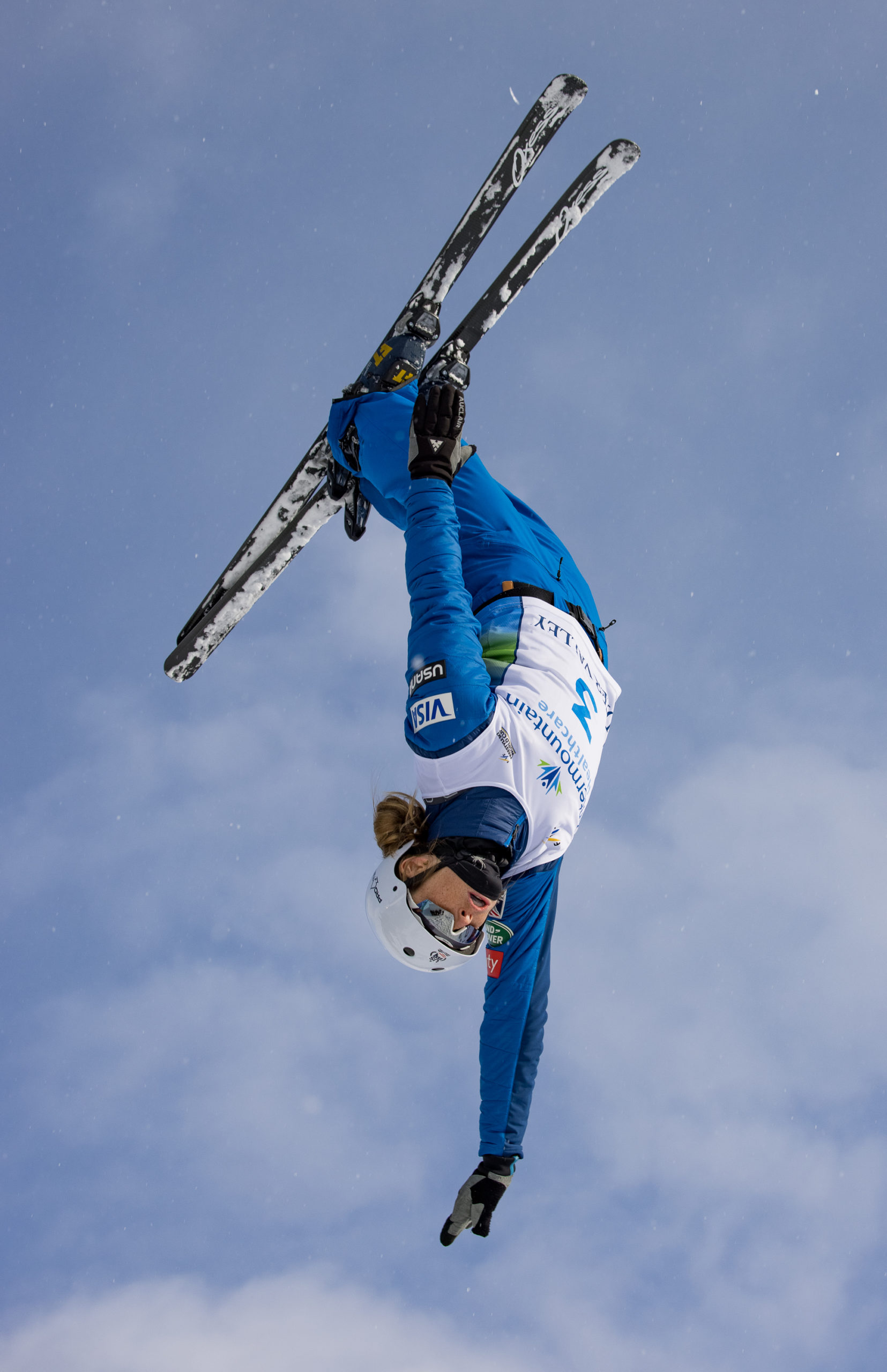
Aerials TrainingPhoto: Steven Kornreich/U.S. Ski Team @usskiteam // @steven_kornreich
Megan Nick, Shelburne
Shelburne native Megan Nick kicked off 2021 in a big way with the first two World Cup gold medals of her career. On January 17, in Yaroslavl, Russia the aerialist upset 2014 Olympic gold medalist Alla Tsuper of Belarus to take the top spot on the podium. Nick’s American teammate, Kaila Kun was third.
As if to prove the win wasn’t a fluke, two weeks later Nick, then 24, repeated her winning full double full (two flips with three twists and a double flip in the second twist) to take home another World Cup gold, this time in Belarus.
The first time Nick tried aerials, it was 2013. She was a student at Champlain Valley Union High School and doing gymnastics at Green Mountain Training Center in Williston. As part of a senior project, she began researching freestyle skiing and went to a training camp in Lake Placid, N.Y. Shortly after, she got a call asking if she would like to join U.S. development team. She did and has progressed from there.
Nick began ascending to World Cup podiums in 2020, earning two silvers, all while working on a master’s degree in environmental studies at the University of Denver.
 Mikaela Osler, Jericho
Mikaela Osler, Jericho
Mikaela Osler grew up in Jericho, Vt. near the base of Bolton Mountain. Her first hikes were to Butler and Taylor Lodge. Last summer, Osler and her father hiked to the northern terminus of the Long Trail. He left her there as she set out to hike the length of the trail, unsupported, and very quickly.
Over the next six days, Osler, 27, cried —“loud, ugly, embarrassing crying,” sang at the top of her lungs, drew water from puddles when there was no clear water in sight, ran through the night, heard a moose huffing in the dark, endured torrential downpours, was constantly hungry, and dealt with trenchfoot that became so painful she could barely walk.
She considered quitting multiple times. But in the end, she did what she set out to do: she set the fastest known time for an unsupported Long Trail hike for a woman. She finished in 6 days, 11 hours and 33 minutes, taking 7 minutes off Nika Meyer’s 2019 FKT. The supported women’s FKT was set by Alyssa Godesky in 2018: 5 days, 2 hours, 37 minutes.
Osler like Meyers, has completed the Triple Crown of trails – the Pacific Crest (2,650 miles), the Continental Divide Trail (3,100 miles)and the Appalachian Trail (2,190.)
In October 2020, Osler also set an usupported FKT for women on the Colorado Trail, running the 485-mile high-elevation trail in 10 days, 12 hours, and 36 minutes – taking a full four days off the record. The Stanford University grad sent three food drops to herself along the way but otherwise carried or foraged for what she ate.
Osler’s was not the only FKT for 2021. A few weeks later, on July 14, Ben Feinson, a carpenter from Richmond, Vt, ran the same route and set a supported record of 4 days, 11 hours, 44 minutes, taking an hour and two minutes off Jonathan Basham’s 2007 record.
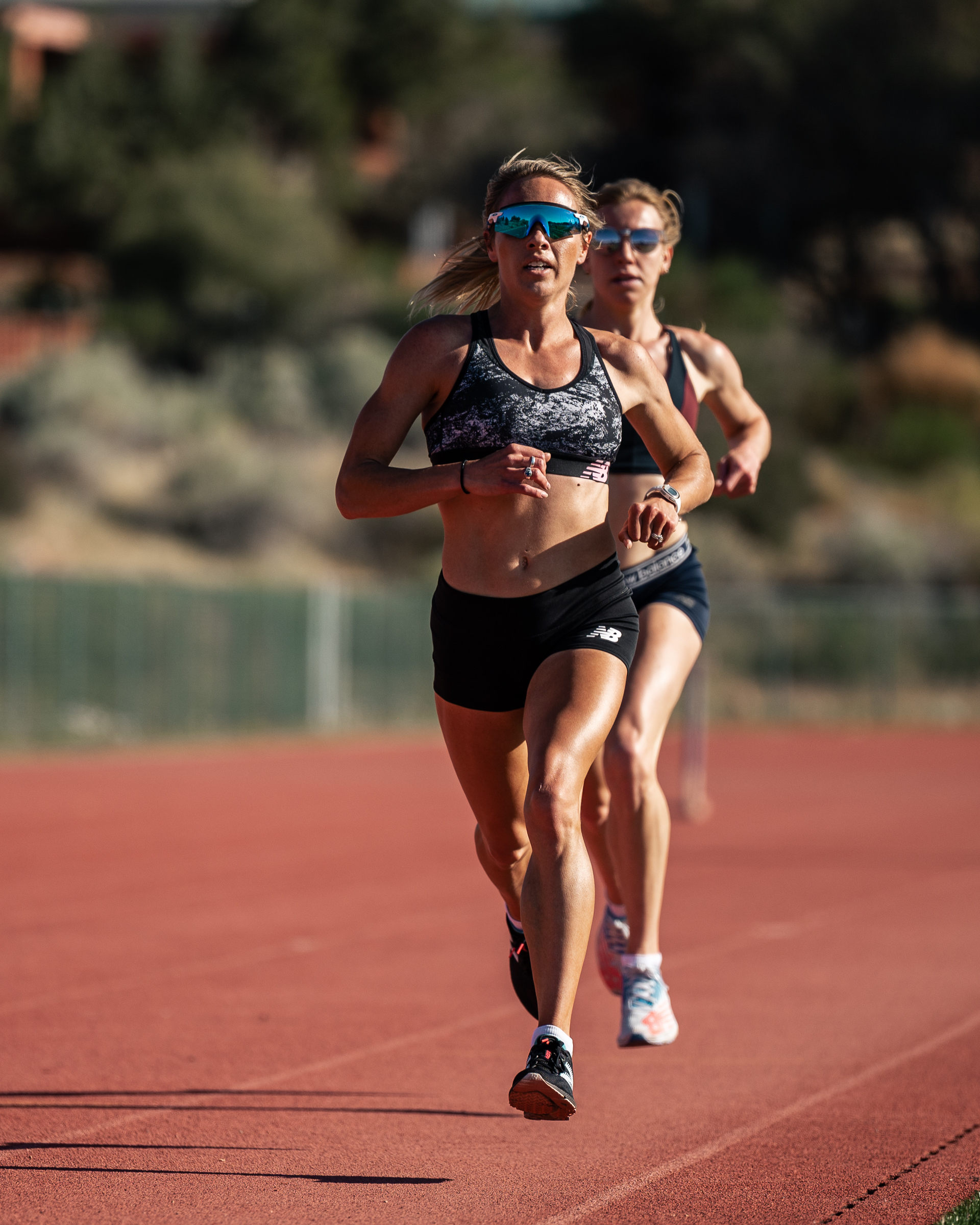 Elle Purrier, Berkshire
Elle Purrier, Berkshire
On June 22, Elle Purrier’s quiet life as the daughter of two norther Vermont dairy farmers, and now, a partner and wife of a dairy farmer came to an abrupt halt. She set a new personal record and meet record at the Olympic Trials in the 1500 meters, winning and earning herself a trip to the Tokyo Olympics.
It would be her second overseas competition. In the first, the World Championships in Doha, she finished 11th and earned a spot on Team USA.
Purrier-St. Pierre didn’t just win each of her Olympic trials heats, she won them easily. In the final, after being pushed off the track, she regained her balance, moved to the front and led the entire race. She hit the 800 meter mark in 2:09. In the last lap, she lengthened her lead, moving ahead until it looked like she was running alone. She crossed the line in 3:58:36.
Right behind her were two of her New Balance teammates whom Mark Coogan, a former coach at Dartmouth, has also coached. Cory McGee finished 4:00:67 and Heather Maclean, a good friend of Purrier-St. Pierre, in 4:02:09, all punching their tickets to Tokyo.
For Purrier, who set the record for the second-fastest indoor mile in history in 2020, it was a crowning moment what she called the “highest honor of my life.” At the Olympics, Purrier easily made the first qualifying rounds and made it into the finals. The top 10 women to do so were mainly veterans. Purrier finished 10th in the world – a huge accomplishment for someone who has barely raced internationally.
Since returning home Purrier has been doing short runs on the Missiquoi Valley Rail trail and helping her husband, Jamie St. Pierre on their dairy farm. But now it’s back to training. Look for the New Balance athlete to defend her title and 2020 American indoor mile record a the January 29th meet in New York.
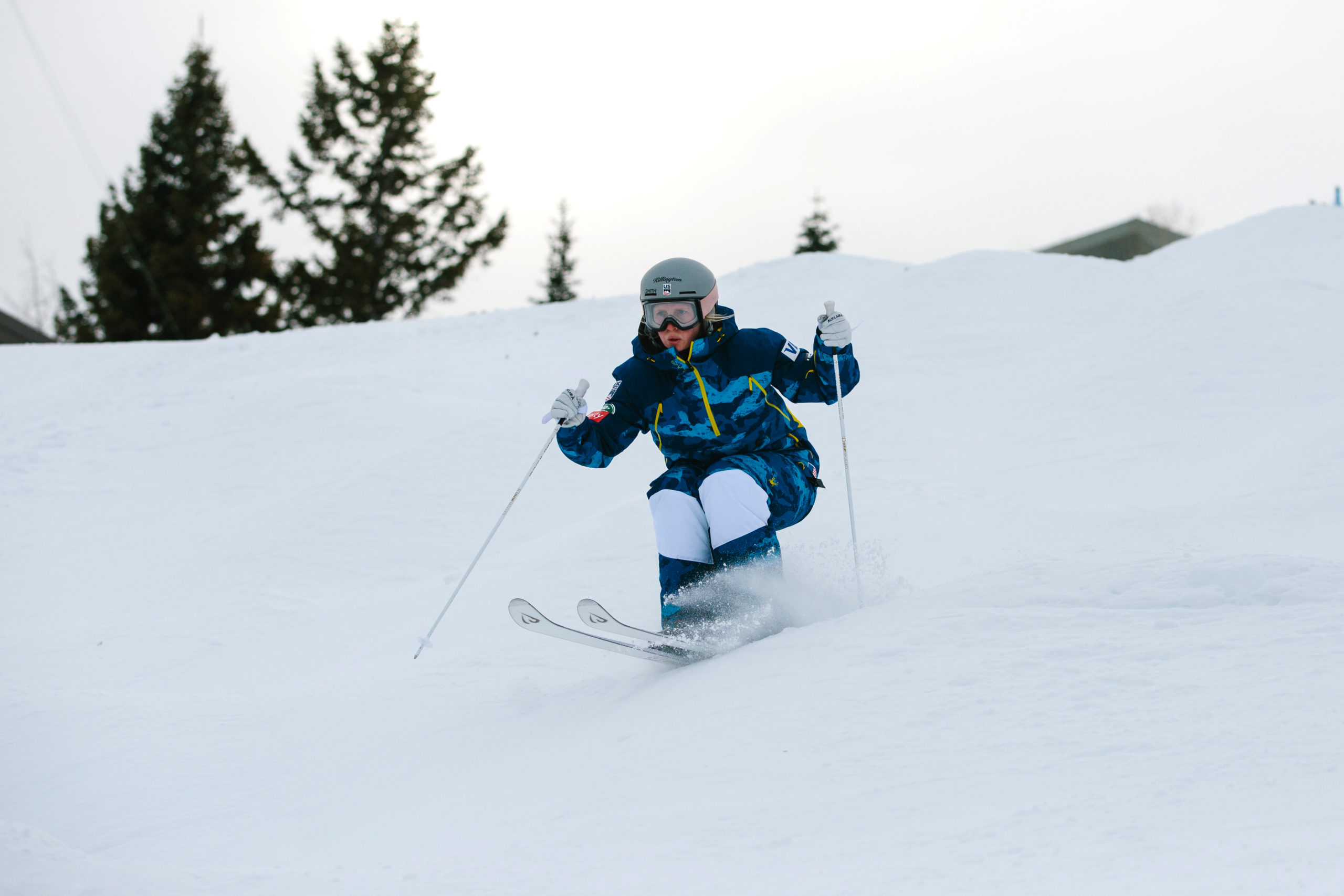
Hannah Soar, Killington
Killington’s Bear Mountain is ground zero for mogul skiing in the East. It’s a long, bumpy run that has turned out some of the best mogul skiers in history, namely Donna Weinbrecht.
And now, there’s another superstar who’s been raised on Killington’s bumps: Hannah Soar. Soar’s grandfather and father grew up skiing at Killington and still own condos there and that’s where she’s spent her weekends, skiing the moguls or in playing in the snow around the Bear Mountain Parking lot. The first sign of her mogul prowess came at age 8 when she finished fourth in the Bear Mountain Mogul Challenge.
Since then, Soar’s skied that run hundreds of times, blond ponytail flying in an homage to Weinbrecht and a tie-dyed outfit, when she can.
Though she lived in Somers, Ct. and went to public school there until attending Killington Mountain School. In 2016, she was one of the top three mogul skiers under 18, setting her up to make the U.S. Ski Team.
In 2019, Soar earned her first World Cup Cup, skiing in Thaiwoo, China. Since then, she’s earned three more podiums, including two in 2021, in both moguls and dual moguls and was one of the first skiers to punch her ticket to the 2022 Games. During Covid, Soar stayed in shape by skinning and skiing every mountain in Vermont in six days. She then ran a century ride, her first, and then did another to support Vermont Adaptive, an organization she’s since become involved with.
Soar, now 22, tries to channel the fun of springtime skiing on Superstar in every event. “Every single person I’ve skied with at Killington has shaped the skier I am today. I’ve always skied with everyone – my friends, my parents’ friends — and we have one big bump gang,” she told Killington’s 4241 podcast in December. “I’ve had an opportunity to leave Killington and go somewhere else but I keep coming back. It’s my home.”

